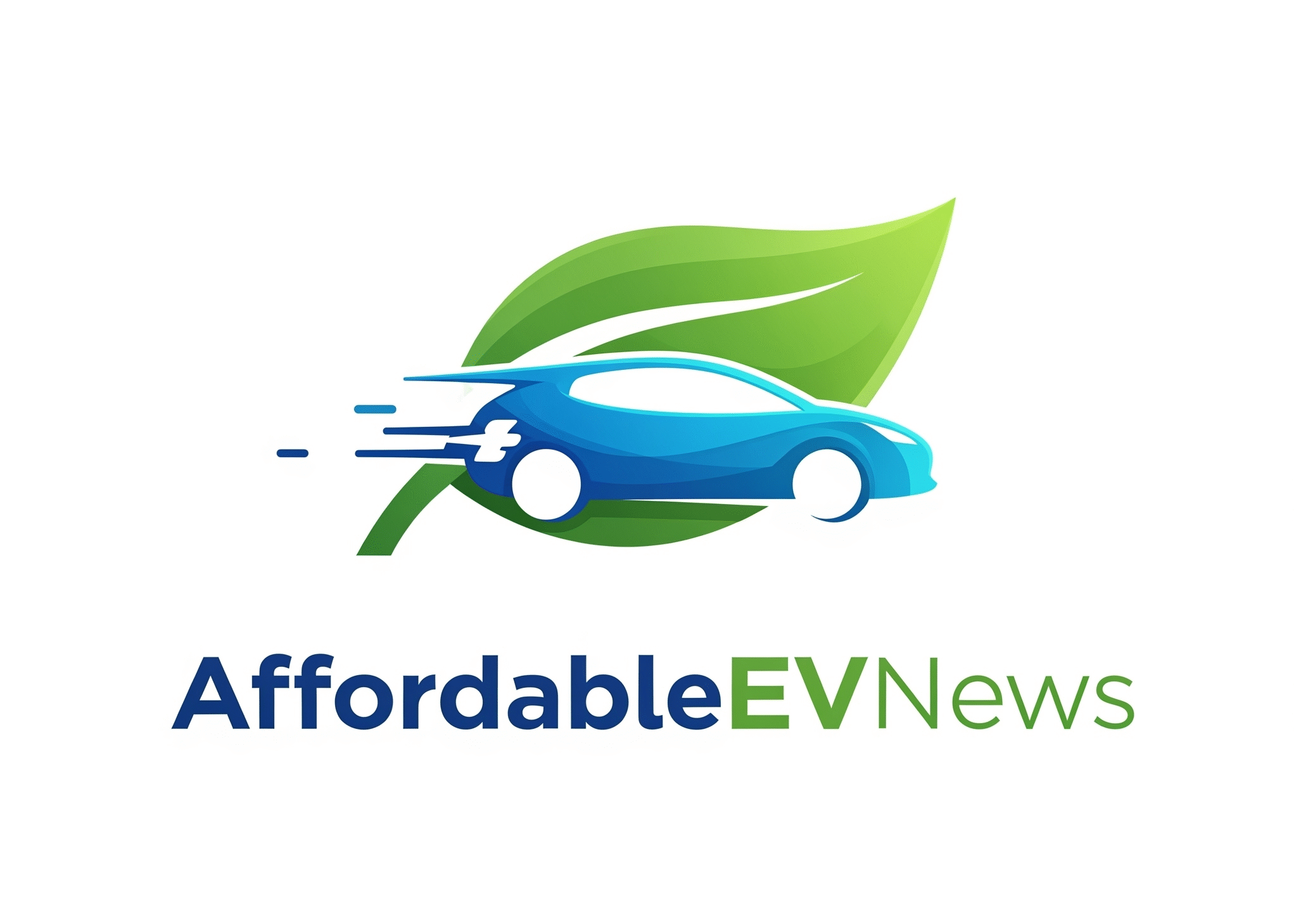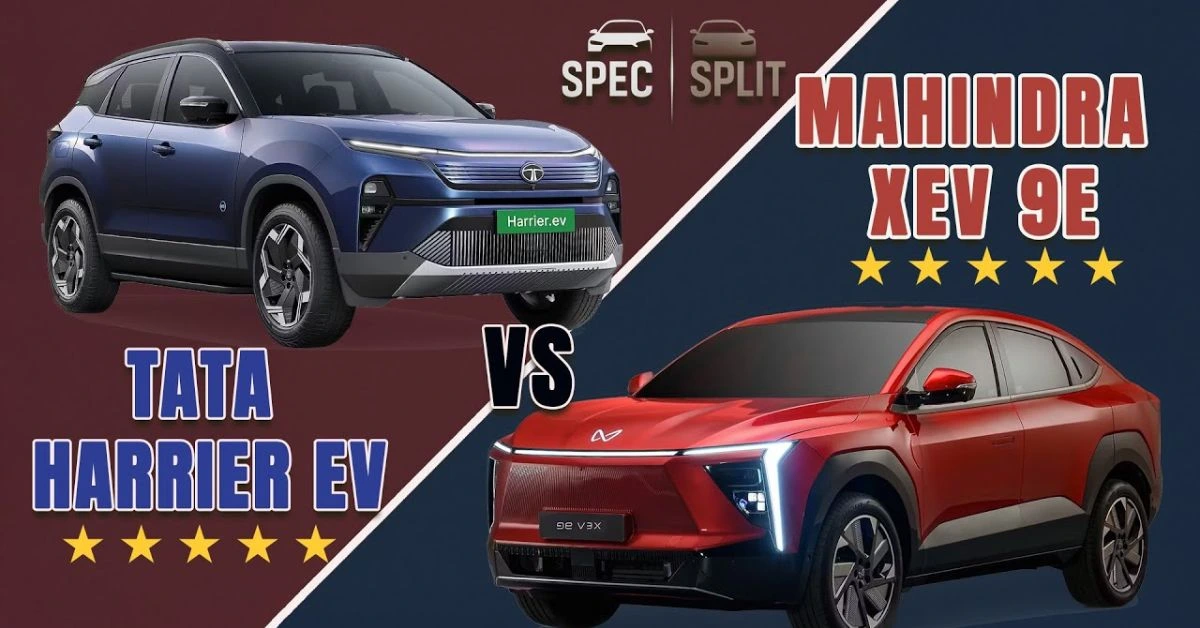Explore how the Mahindra XEV 9e and Tata Harrier EV stack up in design, performance, range, features, safety, and pricing. Which premium electric SUV offers the better value in India?
Tata Harrier EV vs Mahindra XEV 9E: A Detailed Showdown of India’s Premium Electric SUVs
As India’s premium EV SUV segment heats up, two homegrown giants—Mahindra and Tata Motors—are battling for dominance with the XEV 9e and Harrier EV. Both offer cutting-edge design, tech-rich cabins, strong powertrains, and competitive range, but their approaches differ sharply. Here’s a detailed comparison to help you decide which EV SUV delivers the better value.
Design & Dimensions: Born Electric vs ICE-Based
Mahindra XEV 9e stands out with its “born electric” coupe-like design, flush door handles, full-width LED strip, and better boot (663L) and frunk (150L) space. Its larger dimensions and premium finish give it strong road presence.
Tata Harrier EV, though striking, inherits its ICE sibling’s proportions. It adds a closed-off grille and mild design tweaks. It’s wider and taller but offers a smaller 503L boot and no frunk—an area where the XEV 9e clearly leads. Tata’s platform, while claimed as a “pure EV,” doesn’t entirely support that in packaging.
Performance: AWD Punch vs Balanced Tuning
Harrier EV leads in outright performance with a dual-motor AWD setup generating 396 PS and 502 Nm, offering six terrain modes and a 0–100 kmph time of 6.3 seconds. It’s clearly designed for more spirited and versatile driving, including light off-roading.
XEV 9e, with a single-motor setup, offers up to 286 PS and 380 Nm in its top variant. While it lacks AWD (for now), its drivetrain is finely tuned, with features like auto regen, one-pedal drive, and radar-based regen comparable to higher-end global EVs. Its top speed is higher at 202 kmph, and lower variants are quicker than Harrier’s RWD versions.
Battery & Charging: Marginal Wins with Mahindra
Assuming corrected figures, the XEV 9e offers 59 kWh and 79 kWh packs, with a claimed range of 656 km and 180 kW fast charging support (20–80% in 20 mins).
Harrier EV likely offers 65 kWh and 75 kWh options (despite the initial 165–175 kWh claim), with a range of 622 km and 120 kW charging (20–80% in under 25 mins). While Tata matches well, Mahindra edges ahead in both range and charging speed, assuming ideal conditions.
Technology & Interior: Luxury vs Practical Innovation
| Feature | Mahindra XEV 9e | Tata Harrier EV |
|---|---|---|
| Platform | Born-electric (INGLO) | Modified ICE-based (Omega EV) |
| Design Highlights | Coupe-like, flush handles, frunk (150L) | ICE-influenced, no frunk |
| Boot Space | 663L | 503L |
| Powertrain | Single-motor (up to 286 PS, 380 Nm) | Dual-motor AWD (396 PS, 502 Nm) |
| 0–100 kmph | ~8.3s (FWD), ~6.5s (XUV 9e Pack 3) | 6.3s (AWD) |
| Top Speed | 202 kmph | ~180 kmph |
| Battery Options | 59 kWh / 79 kWh | 65 kWh / 75 kWh (est.) |
| Range (Claimed) | Up to 656 km | Up to 622 km |
| Fast Charging | 180 kW (20–80% in 20 mins) | 120 kW (20–80% in under 25 mins) |
| Screens & Tech | Triple screen, 2 rear screens, 1400W audio | QLED screen, UWB key, underbody cam |
| Safety Features | ADAS L2+, up to 6 airbags (top trims) | ADAS L2, 7 airbags, 5-star Bharat NCAP |
| Price Range | ₹28.50L – ₹31L (with charger) | ₹21.49L – ₹29.49L (with charger) |
| USP | Luxury, tech, comfort, range | AWD, safety, entry price |
XEV 9e leans into luxury with a 12.3-inch triple-screen dash, two rear screens, 16-speaker 1400W system, dual laminated windows, and a plush, refined cabin. Features like semi-active dampers, a tight 10m turning radius, and premium NVH insulation push it closer to international standards.
Harrier EV emphasizes utility and smart tech—QLED touchscreen, transparent view underbody cam, valet mode, UWB digital key, and dashcam integration. However, it lacks rear screens and semi-active suspension, falling slightly short in terms of luxury execution.
Safety & Quality: Tata’s Edge on Paper, Mahindra’s in Practice?
Harrier EV offers 7 airbags, ADAS Level 2 with 20+ features, and a 5-star Bharat NCAP rating. It comes off as a solid safety package.
XEV 9e offers ADAS Level 2+, but only on top trims. However, no major quality concerns have been reported by owners yet—unlike some early Harrier EV QC issues noted on forums. Mahindra’s clean sheet on this front may matter to premium buyers.
Pricing: Perception vs Real Gap
Harrier EV starts at ₹21.49 lakh—making it India’s most affordable AWD EV SUV. But the QWD variant with charger goes up to ₹29.49 lakh, just ₹1.5 lakh shy of the XEV 9e Pack 3 at ₹31 lakh (with charger). For nearly similar battery capacity, the real-world price gap narrows to ₹90,000 between top trims.
Verdict: Performance or Polish?
- Choose Harrier EV if you value AWD, off-road capability, and Tata’s safety track record, all at a compelling entry price.
- Choose XEV 9e if you seek refined ride quality, superior tech and luxury, better range, and faster charging—especially in top trims.
A forum poll showed 63% prefer the Harrier EV, but concerns over Tata’s inconsistent QC remain. Both SUVs are among the best premium EVs in India today, but which suits you better comes down to your personal priorities.
EV luxury or EV capability? In 2025, you don’t have to choose—you just have to know which side you lean toward.

